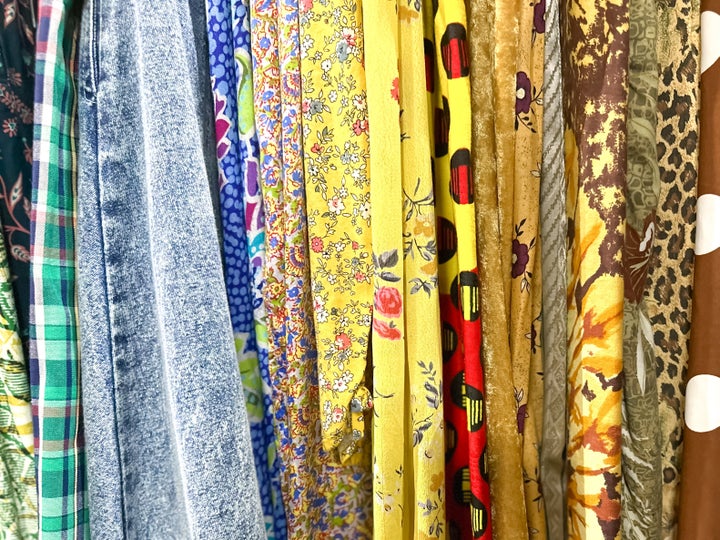
If you’re anything like us, you bloomin’ love a rummage through a vintage market or a charity shop.
Thanks to the rise of pre-loved shopping apps, trends like #thrifttok, growing awareness of the harms of fast-fashion waste causes our planet and the cost-of-living crisis tightening our purse strings – people are looking for more affordable and eco-conscious ways of breathing new life into their wardrobes.
However, you might not realise it, but you could be causing your new (old) items wear and tear faster than you intend to.
Why? Because caring for pre-loved finds is a little different to caring for brand new items.
From removing stains or making repairs to protecting items from further damage, the experts at Ecover have been educating team HuffPost UK on how we should actually be taking care of our vintage purchases – and it’s safe to say we’re definitely in need of some help.
Inspect the pre-loved garment to identify any damage or stains
If your thrifted item does have marks (and let’s be real – this is very common), try to identify what they could be before running your clothing under hot water or blotting, as these methods have the potential to make some stains worse.
Equally, any repairs or touch-ups should be made prior to the first wash, to avoid further damage. Based in London? Ecover is bringing The rEcovery Workshop to Shoreditch from the 21st - 23rd September, a free three-day event where the public can stop by to have their clothes mended and revived.
Spot, blot and be targeted with stubborn stains, prior to washing
Okay, so you’ve sussed what that dodgy mark is. Once identified, use a nifty stain remover to remove or loosen even the grubbiest of stains before washing.
Plunge your pre-loved garments into a bowl of water
Add your clothes to a bowl of water with a small amount of laundry detergent, before leaving to soak for a few hours. Most stains respond well to hot water, but be mindful that others, respond better to cold.
This step will help to further loosen or eliminate any stubborn stains. You can also add laundry bleach to the bowl to create a diluted solution, which will help to treat bleachable stains.
Load your second hand garments into the washing machine and use a short cycle at a low temperature
Wear-and-tear throughout the garment’s lifespan may mean that it’ll require a gentler wash than your fresh from the highstreet purchases.
Remember twenty is plenty, and actually works better for some stains, like sweat. Not only is this a more environmentally-friendly method (therefore reducing your carbon footprint even further, alongside the decision to shop pre-loved!), but it’ll help preserve delicate and worn garments against any further damage.
For a thorough sterilisation, consider steaming your pre-loved garments
Hanging your item in a shower and letting the steam do the work for you will help sterilise and further freshen up your pre-loved items without damaging them – as well as getting rid of pesky creases. Avoid using a hot iron, as this could damage the garment even further!
Don’t tumble dry your pre-loved items – instead reap the benefits of Mother Nature
Throughout a garment’s lifespan, the fibres and materials will naturally weaken. So preserve your pre-loved clothes and protect against further damage and pressure by air-drying your load. It’ll reduce your energy consumption AND save you money, too. Win, win.
Now just to get some washing drying weather...